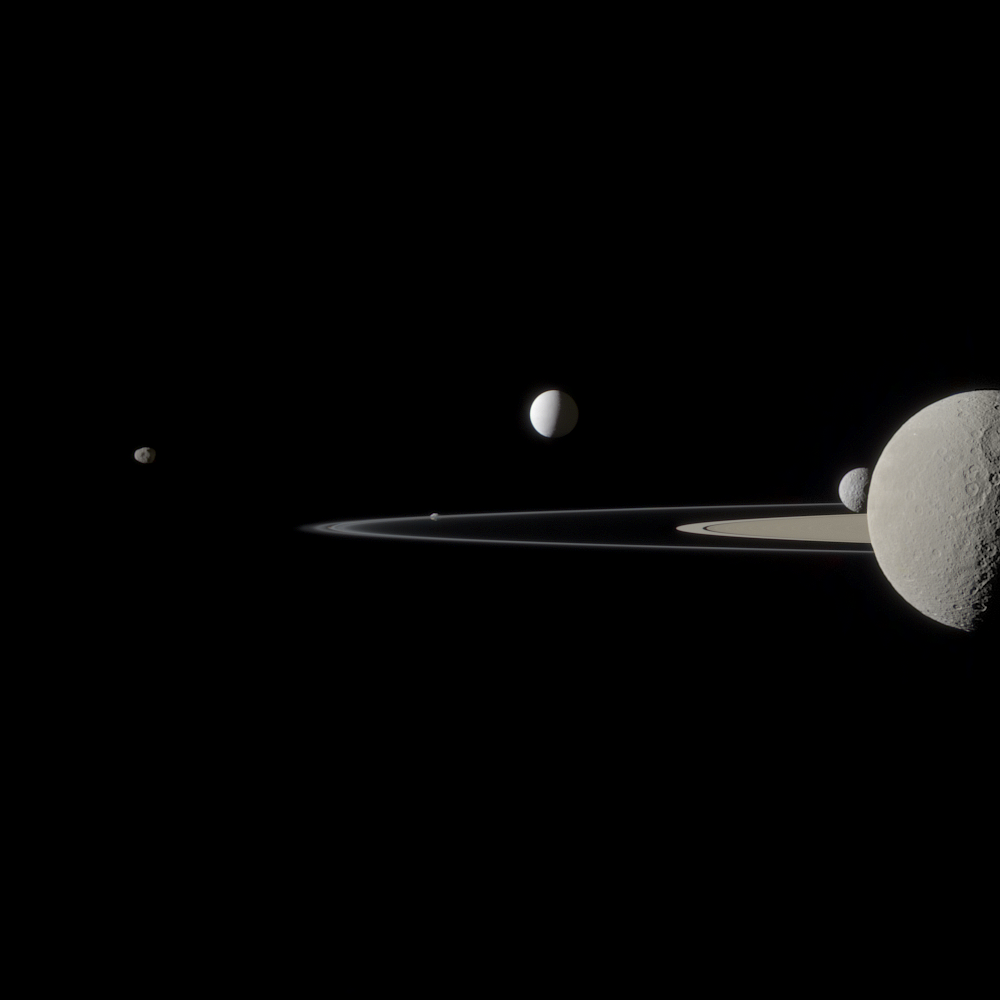 The tiny but very active moon Enceladus is seen here lost within the E-Ring of Saturn. The moon, as many of us know, is quite active with cryo-volcanic geysers littered throughout the ridges of the “tiger stripes” found mostly in the moon’s southern hemisphere. Since most of the ejecta from Enceladus is jettisoned fast enough to escape the tiny moon’s gravity, most the material winds up orbiting Saturn itself and is therefore helping over a very long period of time to form Saturn’s E-Ring. This at least partly helps solve the question of where Saturn’s massive ring structure originates.
The tiny but very active moon Enceladus is seen here lost within the E-Ring of Saturn. The moon, as many of us know, is quite active with cryo-volcanic geysers littered throughout the ridges of the “tiger stripes” found mostly in the moon’s southern hemisphere. Since most of the ejecta from Enceladus is jettisoned fast enough to escape the tiny moon’s gravity, most the material winds up orbiting Saturn itself and is therefore helping over a very long period of time to form Saturn’s E-Ring. This at least partly helps solve the question of where Saturn’s massive ring structure originates.
Image by Val Klavans.






















 This is the best lit image taken of the plumes of Enceladus thus far by Cassini. The moon is lit from the front by Saturnshine and the plumes are being back-lit by the Sun directly behind. A perfect alignment for revealing active geysers on a small moon.
This is the best lit image taken of the plumes of Enceladus thus far by Cassini. The moon is lit from the front by Saturnshine and the plumes are being back-lit by the Sun directly behind. A perfect alignment for revealing active geysers on a small moon.